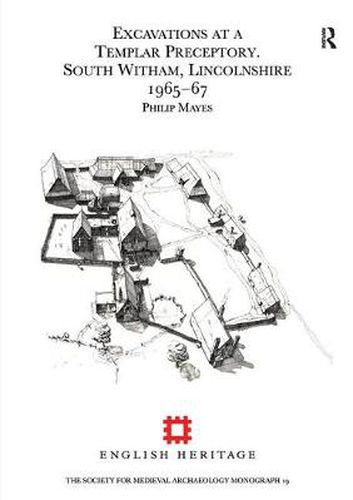Readings Newsletter
Become a Readings Member to make your shopping experience even easier.
Sign in or sign up for free!
You’re not far away from qualifying for FREE standard shipping within Australia
You’ve qualified for FREE standard shipping within Australia
The cart is loading…






The excavations at South Witham in Lincolnshire produced the most complete archaeological plan of the preceptory of the Military Orders so far seen in Britain. Before 1965 there had been only limited investigation of Knights Templar houses and evidence for day-to-day activities was almost non-existent. Never before had the different components of a preceptory been examined in detail using modern archaeological techniques. This monograph presents the final publication of results, beginning with separate chapters dedicated to the three main phases of occupation.Land in South Witham was first acquired by the Templars between 1137 and 1185 and thereafter a series of buildings was constructed throughout the late 12th and 13th centuries. The preceptory may already have been in decline before the final arrest and dissolution of the Order in the early 14th century. All the well-preserved buildings are described in detail by the excavation director, including the barns, blacksmith’s forge, brewhouse, chapel, gateshouse, granaries, Great Hall, kitchen ranges, watermill and workshops.The text is enriched by many photomosaics and aerial photographs. This archaeological evidence then provides the basis for a well-illustrated discussion of architectural reconstructions by John Smith while the documentary background is summarised by Eileen Gooder. Among the finds discussed by a range of specialists are coins (Rigold), metalwork (Goodall), a prehistoric flat axe (Davey), objects of bone and antler (MacGregor), pottery (Johnson), architectural fragments (Gee) and painted wall plaster (Rouse). Environmental and industrial evidence are also considered, including animal bone (Harcourt), metal-working residues (Morgan) and human skeletal remains (Manchester).
$9.00 standard shipping within Australia
FREE standard shipping within Australia for orders over $100.00
Express & International shipping calculated at checkout
The excavations at South Witham in Lincolnshire produced the most complete archaeological plan of the preceptory of the Military Orders so far seen in Britain. Before 1965 there had been only limited investigation of Knights Templar houses and evidence for day-to-day activities was almost non-existent. Never before had the different components of a preceptory been examined in detail using modern archaeological techniques. This monograph presents the final publication of results, beginning with separate chapters dedicated to the three main phases of occupation.Land in South Witham was first acquired by the Templars between 1137 and 1185 and thereafter a series of buildings was constructed throughout the late 12th and 13th centuries. The preceptory may already have been in decline before the final arrest and dissolution of the Order in the early 14th century. All the well-preserved buildings are described in detail by the excavation director, including the barns, blacksmith’s forge, brewhouse, chapel, gateshouse, granaries, Great Hall, kitchen ranges, watermill and workshops.The text is enriched by many photomosaics and aerial photographs. This archaeological evidence then provides the basis for a well-illustrated discussion of architectural reconstructions by John Smith while the documentary background is summarised by Eileen Gooder. Among the finds discussed by a range of specialists are coins (Rigold), metalwork (Goodall), a prehistoric flat axe (Davey), objects of bone and antler (MacGregor), pottery (Johnson), architectural fragments (Gee) and painted wall plaster (Rouse). Environmental and industrial evidence are also considered, including animal bone (Harcourt), metal-working residues (Morgan) and human skeletal remains (Manchester).